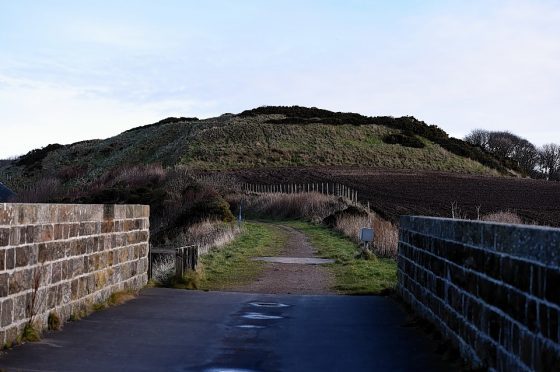A historic beauty spot overlooking the Moray Firth is being spruced up for the first time in decades by a band of volunteers eager to highlight the region’s rich past.
A group of Cullen residents have grouped together to rejuvenate Castle Hill, a scenic mound which looms over the village and offers spectacular panoramic views for miles around.
The community effort has been endorsed by landowners Seafield Estates, and Historic Scotland has commended the work.
A vitrified fort is believed to have been built atop the summit in the 11th century, as its position 200ft above sea level afforded ancient kings and chieftains prime sights of incoming enemies.
Local legend has it that the castle may have been where Elizabeth de Burgh, the wife of Robert the Bruce, died in 1327.
But records are unclear as to whether she passed at the Castle Hill structure or an earlier castle on the site of Cullen House.
But now, only remnants of its groundwork remain and the last time masonry was recorded at the site was in 1873.
The hill became a popular play and leisure spot until the 1960s when the paths around it became overgrown and impassable.
Cullen pensioner Dennis Paterson has led several trips around the hill to clear it of shrubbery.
The 71-year-old said: “The hill used to be a really popular spot for picnics and outings, but for the past 40 or so years it has just become overgrown with whin bushes.
“People haven’t been able to get past the entrance and enjoy it.
“We want to clear the hill, then put a plaque there about its history.”
Mr Paterson and his colleagues hope the revamped hill, which stands beside Cullen’s distinctive railway viaduct, will serve as another attraction for visitors to the seaside port.
A Seafield Estates spokesman said: “We are always keen to assist the community and local groups wherever possible.
“The reopening of a pathway around Castlehill will be a benefit for both local residents and visitors.”
A spokesman for Historic Environment Scotland added: “We’ve provided advice to the land manager regarding vegetation control to benefit the condition of the monument, and we note that
some positive management works have been undertaken.
“We’d be happy to discuss and work with the local community to make the monument more accessible.”
